Large Airway Obstructions
Article Sections
Introduction
Several conditions can affect the large airways (larynx, trachea, carina, and mainstem bronchi), including inflammatory (eg, granulomatosis with polyangiitis), malignant (eg, lung cancer), structural (eg, tracheomalacia), and functional (eg, vocal cord dysfunction) conditions.
Large airway obstructions are classified by their:
- relationship to the pleural lining (ie, intrathoracic versus extrathoracic) and
- mobility (ie, variable versus fixed).
The 3 classic categories are variable intrathoracic, variable extrathoracic, and fixed obstruction.
Pathophysiology
VIO involves dynamic expiratory collapse (ie, "variable") of the main bronchi and intrathoracic trachea. Etiologies include:
- Tracheomalacia and bronchomalacia: Weakness of the large airway walls, resulting in abnormal collapsibility. Can be congenital (ie, defective cartilage rings) or acquired (eg, recurrent lower respiratory infections).
- Mobile masses: Extrinsic compression (eg, substernal goiter, bronchogenic cyst) causes dynamic narrowing of the intrathoracic trachea.
Continue Learning with UWorld
Get the full Large Airway Obstructions article plus rich visuals, real-world cases, and in-depth insights from medical experts, all available through the UWorld Medical Library.
Figures
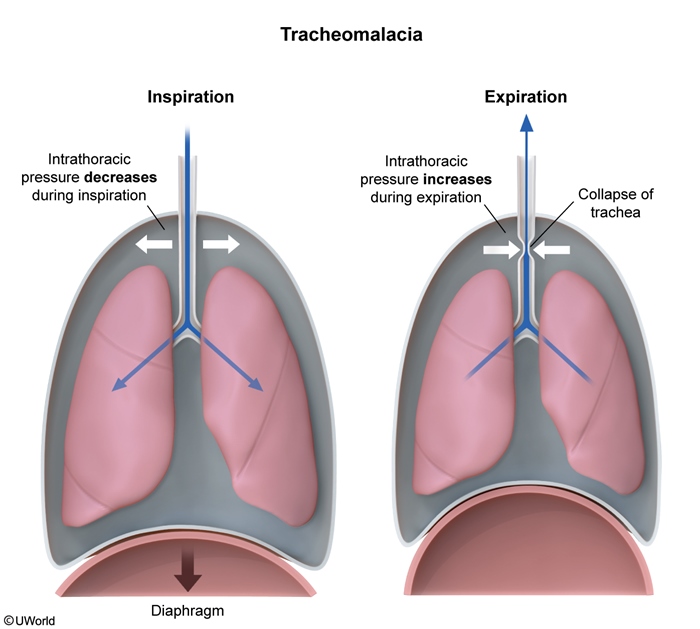
Figure 1
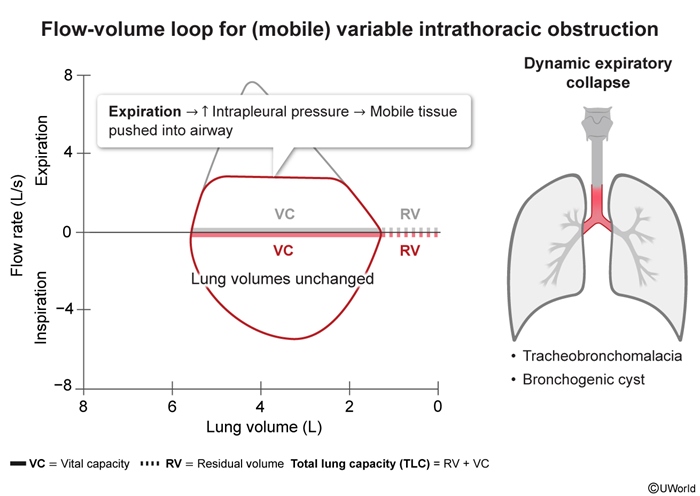
Figure 2
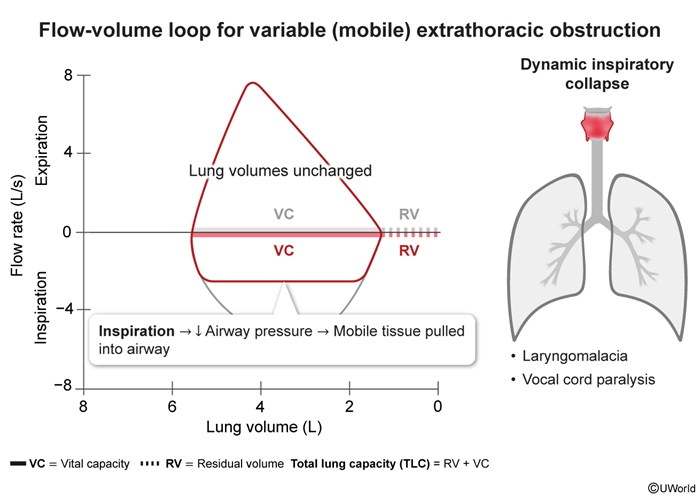
Figure 3
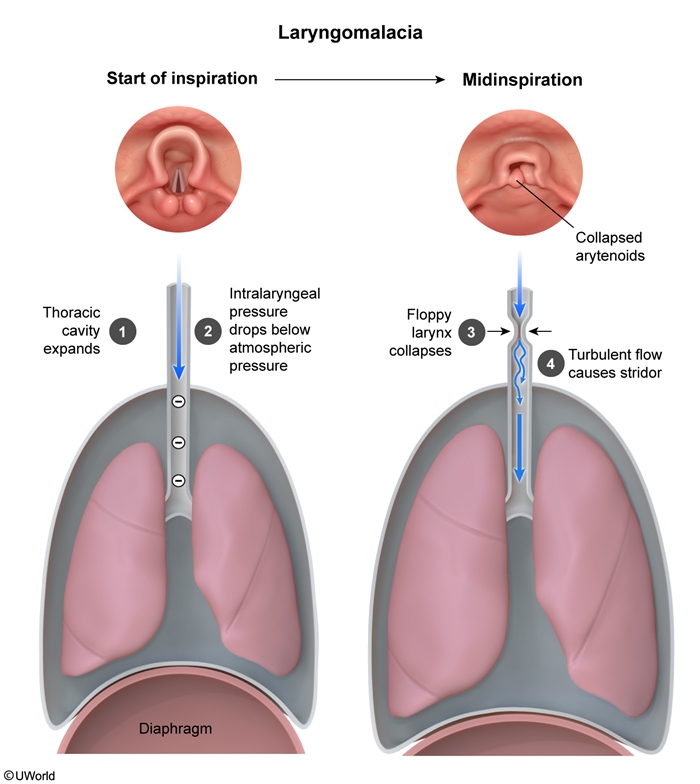
Figure 4
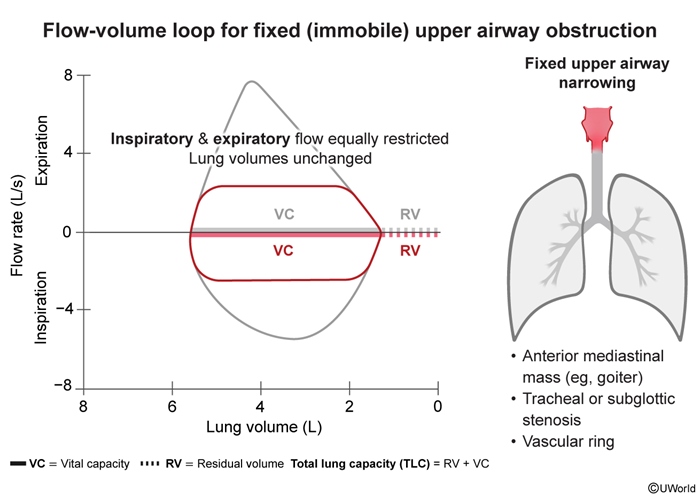
Figure 5
Images
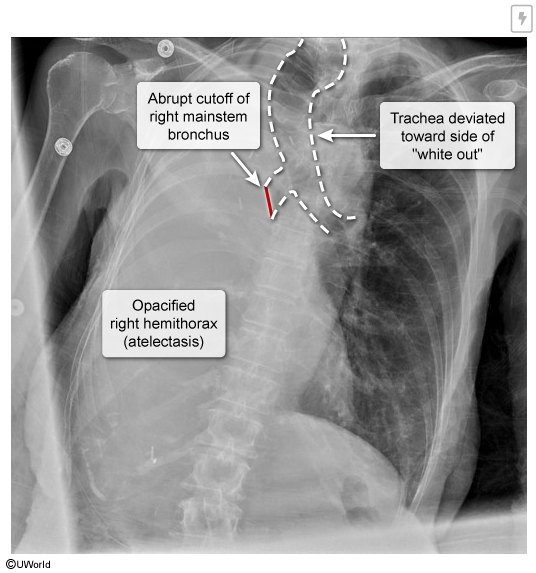
Image 1